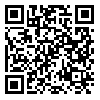Volume 15, Issue 1 (2011)
CLR 2011, 15(1): 23-43 |
Back to browse issues page
Download citation:
BibTeX | RIS | EndNote | Medlars | ProCite | Reference Manager | RefWorks
Send citation to:



BibTeX | RIS | EndNote | Medlars | ProCite | Reference Manager | RefWorks
Send citation to:
Habibzadeh1* M J, Mirmajidi Heshajin2 S S. The Role of Electronic Banking on Money Laundering and Techniqes Deal with It. CLR 2011; 15 (1) :23-43
URL: http://clr.modares.ac.ir/article-20-8627-en.html
URL: http://clr.modares.ac.ir/article-20-8627-en.html
1- 1- Professor, Department of Law Tarbiat Modares University, Tehran, Iran
2- 2- MA Student, Department of Law Tarbiat Modares University, Tehran, Iran
2- 2- MA Student, Department of Law Tarbiat Modares University, Tehran, Iran
Abstract: (11594 Views)
Today, the great changes of the global banking and monetary system, made by the revolution in the information technology and communications, have had deep effect on the lives of individuals. Correspondingly, this technology has confronted the current anti-money laundering domain with a new challenge in a way that access to the electronic banking and internet networks has provided money launderers with a safe environment.
In this article, in addition to describing the electronic commerce and banking and their features as a suitable approach to money laundering, and methods of creating confidence in e-commerece, modern techniques of money laundering will be considered. The classical process of money laundering will be compared with the modern one. It was concluded that information technology and communications, if used in unsafe conditions, have caused the money laundering to be more expanded and have facilitated the methods of committing this crime. Therefore, it is necessary that this issue is taken into consideration while making economic, financial and criminal policies of societies. Concerning this issue, the tips of the Financial Action Task Force (FATF) have been suggested as the best strategies for fighting against money laundering.
Received: 2010/11/3 | Accepted: 2011/03/15 | Published: 2011/06/21
| Rights and permissions | |
 |
This work is licensed under a Creative Commons Attribution-NonCommercial 4.0 International License. |






